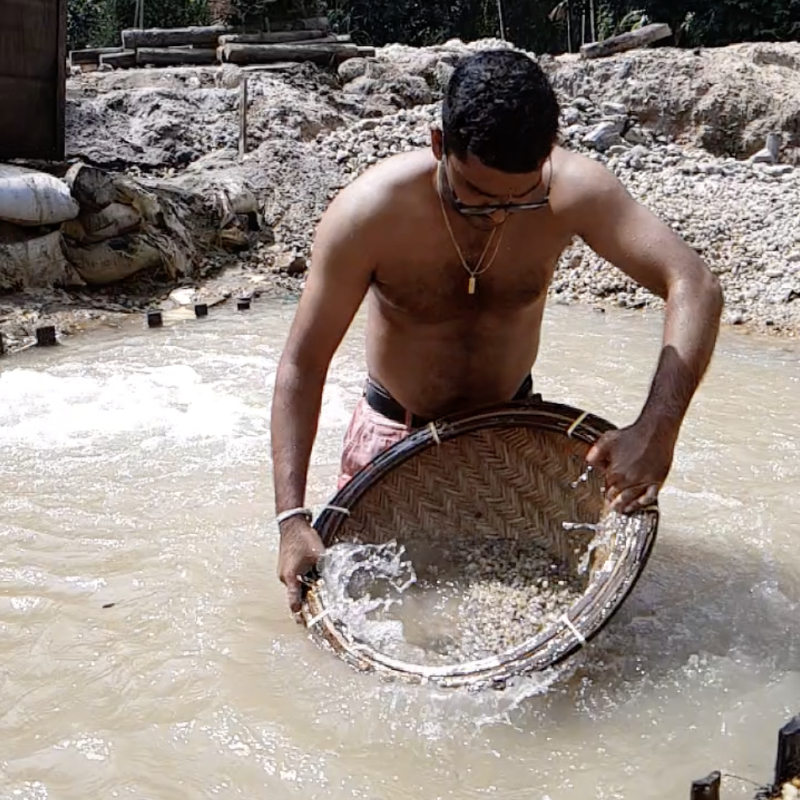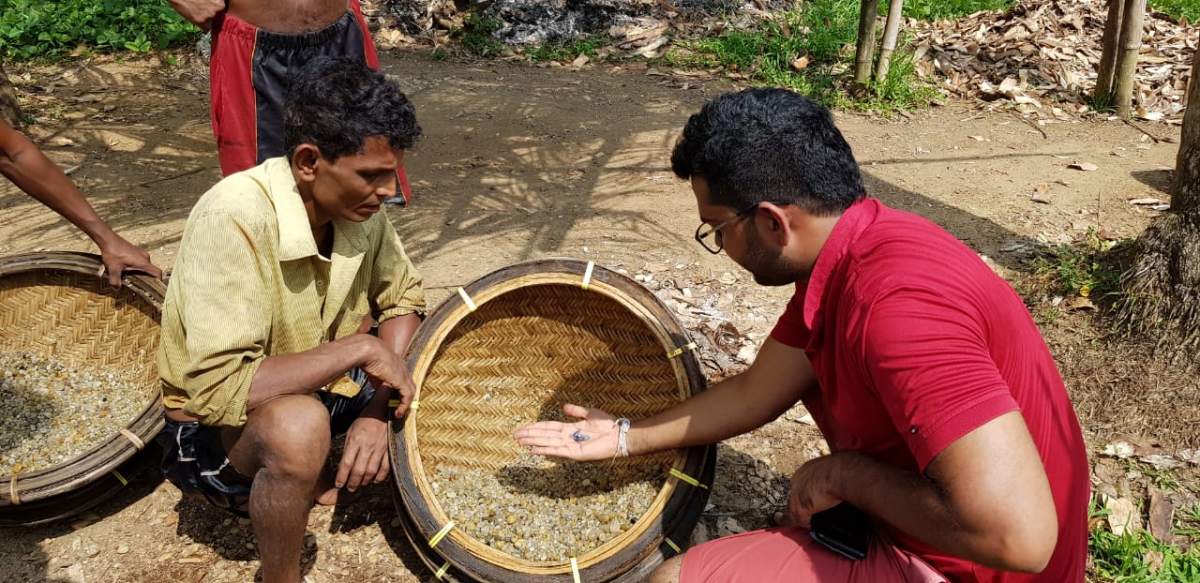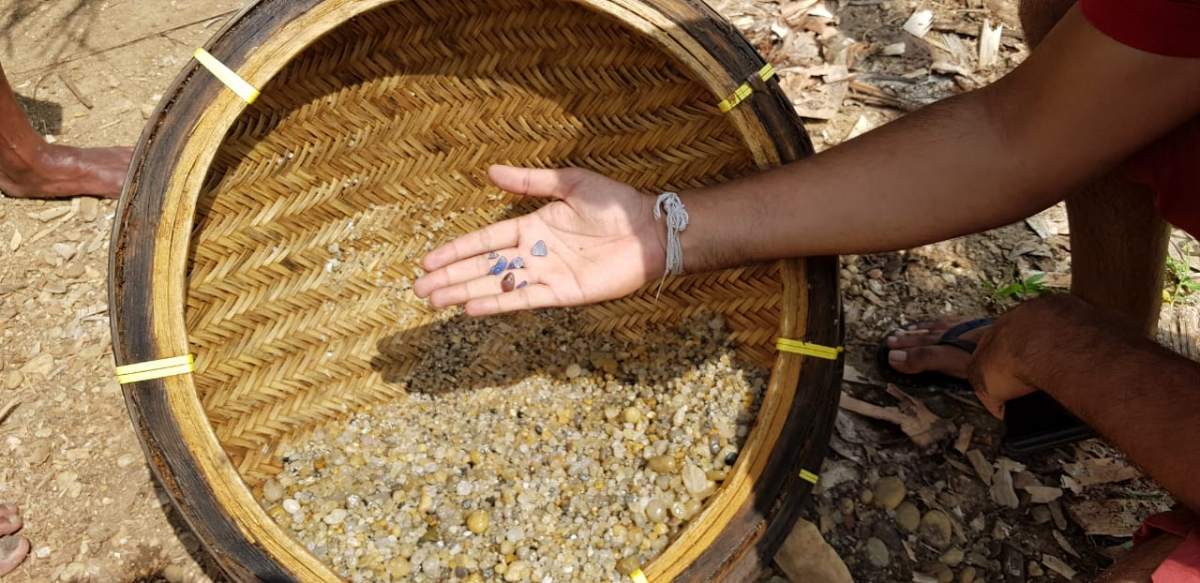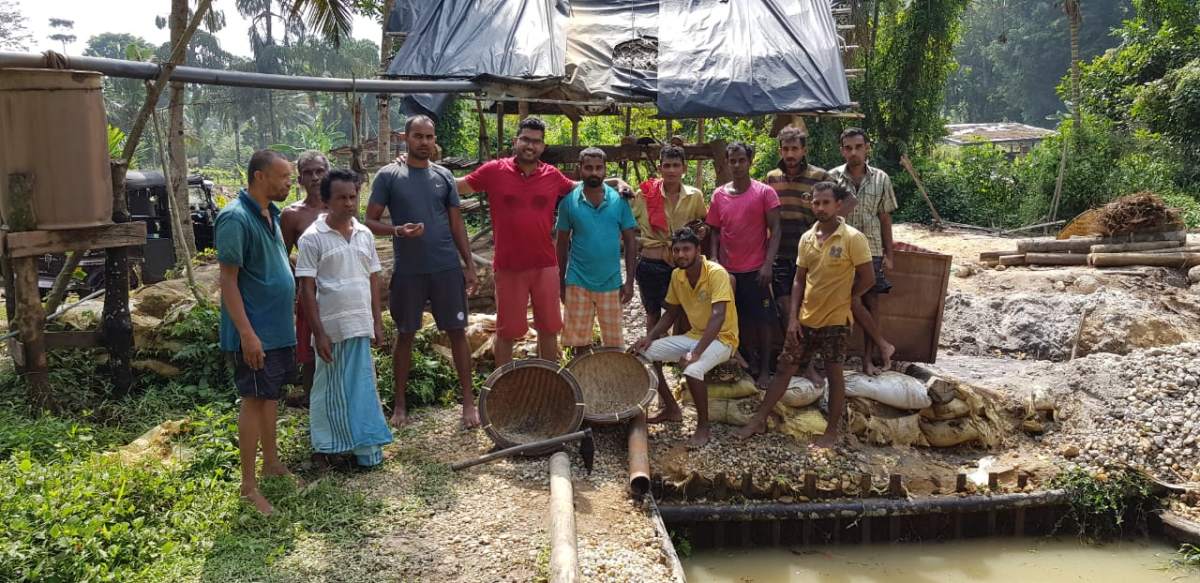Knowledge
12.08.2022 The mining of gemstones
The mining and extraction of gemstones have a long history. Even in the Stone Age, flintstone was a “gemstone” for people that was not only collected, but mined in an organized way.
Of course, in recent centuries, mechanization has not stopped at gemstone mining, yet surprisingly little has changed in the basic way of extracting gemstones.

Primary and secondary deposits
Places where minerals accumulate are called deposits. The exploitation of such deposits is carried out by mines. The way of mining differs, depending on the type of deposit. A distinction is made between primary and secondary deposits.
Primary deposits are located directly at the site where the mineral was formed, while secondary deposits are sites to which minerals have been brought, for example, by erosion or sediment displacement.
In secondary deposits, on the other hand, the gems have been released from the original rock by natural erosion over the centuries. Common secondary deposits are river beds and terraces where the material carried away by wind and water has been deposited and the gemstones now lie buried under layers of sediment. In technical language, such secondary deposits are called “placers”.
The large deposits of colored gemstones in Africa and Asia are largely secondary deposits. Today, mining of primary deposits takes place mainly in the Himalayas and in the Andes in South America.

Different methods of gemstone mining

Primary deposits are exploited by classical mining methods: by tunnels driven underground into the mountain or as open-pit mining in which the rock is removed as a whole.
In secondary mining of gemstones, material is brought to light from river and stream courses or pits and shafts driven in former alluvial deposits down to the gem-bearing strata.
The extracted material is sieved, washed out in water and the coveted rough gemstones are selected by hand. Due to the weathering processes, the rough gemstones are rounded.

Ecological and social gemstone mining
If you want to be absolutely sure you can oversee every step of gemstone mining, processing and transportation, we recommend colored stones from Sri Lanka.
Unlike gold mining, for example, no chemicals are used in the mining of gemstones. Gemstones do not have to be washed out by acids and alkalis, but are broken out of the rock mechanically or are found free as individual pieces in a soap. To identify valuable stones geological and gemmological knowledge as well as a good eye is necessary.
Worldwide, the trend in gemstone mining is going in the right direction. The importance of international corporations in the mining of colored gemstones has greatly diminished, and local cooperations are on the rise.
While diamond mining continues on an industrial scale using heavy equipment, colored gemstones are often mined by small, private operations, cooperatives or local family associations.
Countries like Sri Lanka, Mozambique or Burma have forbidden large-scale mining with heavy
with heavy machinery, therefore the miners use only simple tools like picks, shovels, sieves and baskets.
The Natural Gem has an exclusive cooperation with a mine operator in Sri Lanka that runs 40 gemstone mines, employs 400 people, including no children and women exclusively in administration. We invite you to join us on a trip to Sri Lanka to see for yourself how gemstones are mined in an ethically and ecologically satisfactory manner.




